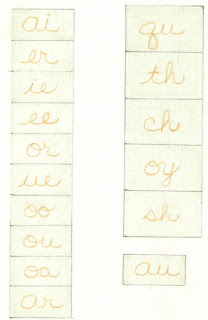This video shows the key 42 sounds as learned in an AMI training center in the midwest.
 Related Montessori Nuggets:
Related Montessori Nuggets:Sandpaper Letters - Single and Double (Phonogram)
Phonogram Key Sounds
 Related Montessori Nuggets:
Related Montessori Nuggets: |
| The sandpaper letter phonograms |
We provide the keys to reading, writing and spelling and the children learn spontaneously and joyfully. While we use a phonetic approach, we do not use it in a traditional manner – we use 42 sounds where a traditional phonetics approach uses 150 or more.